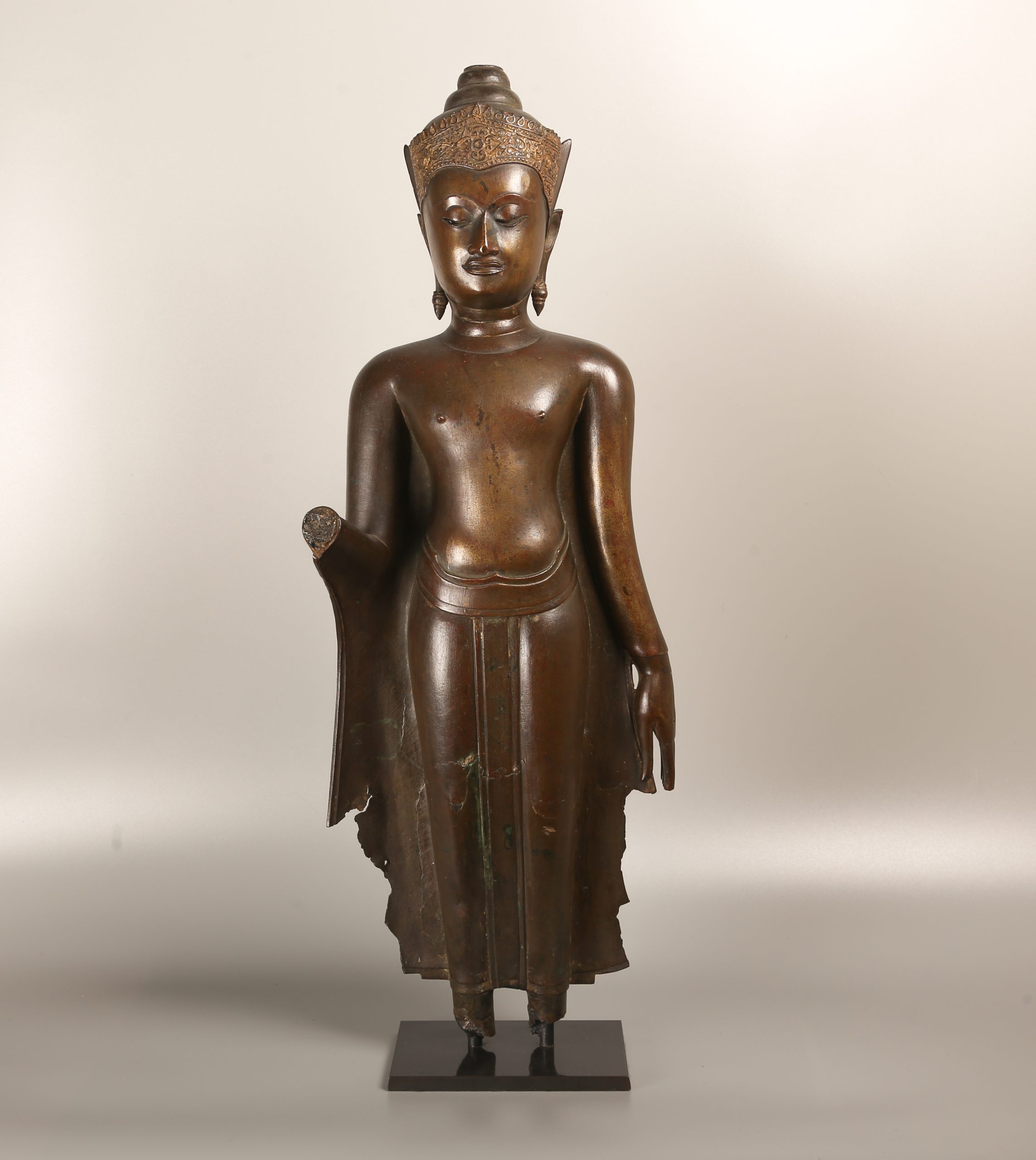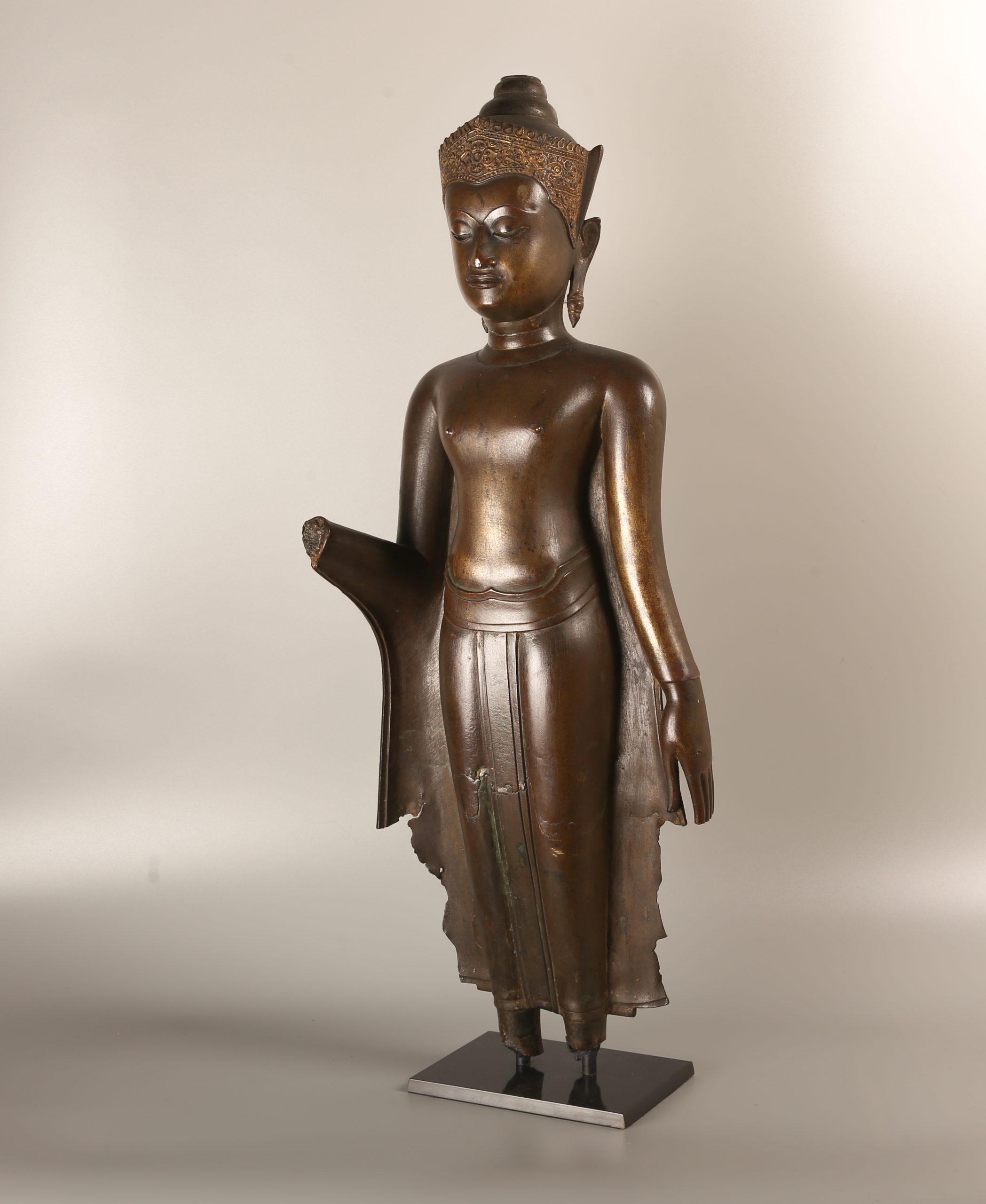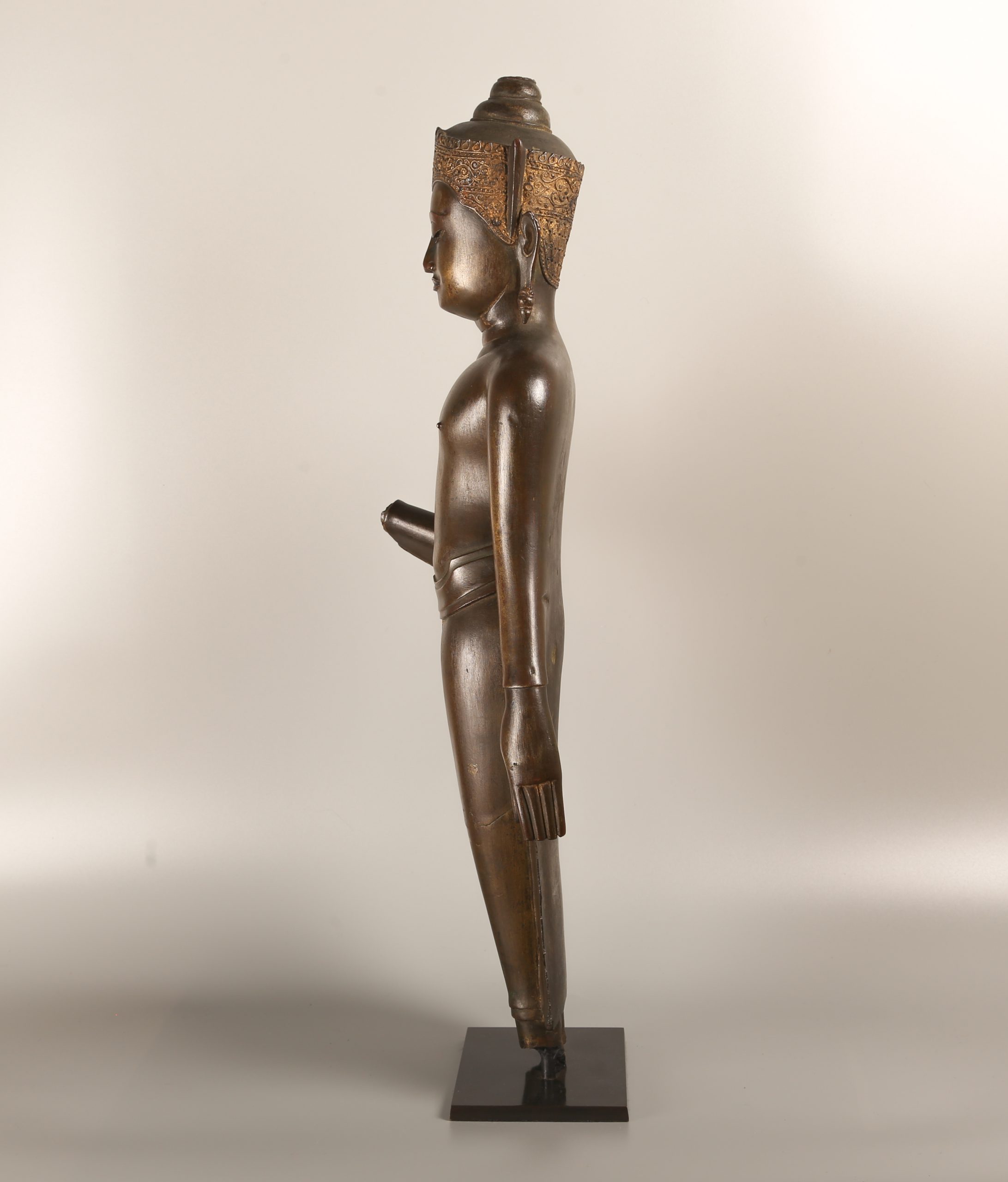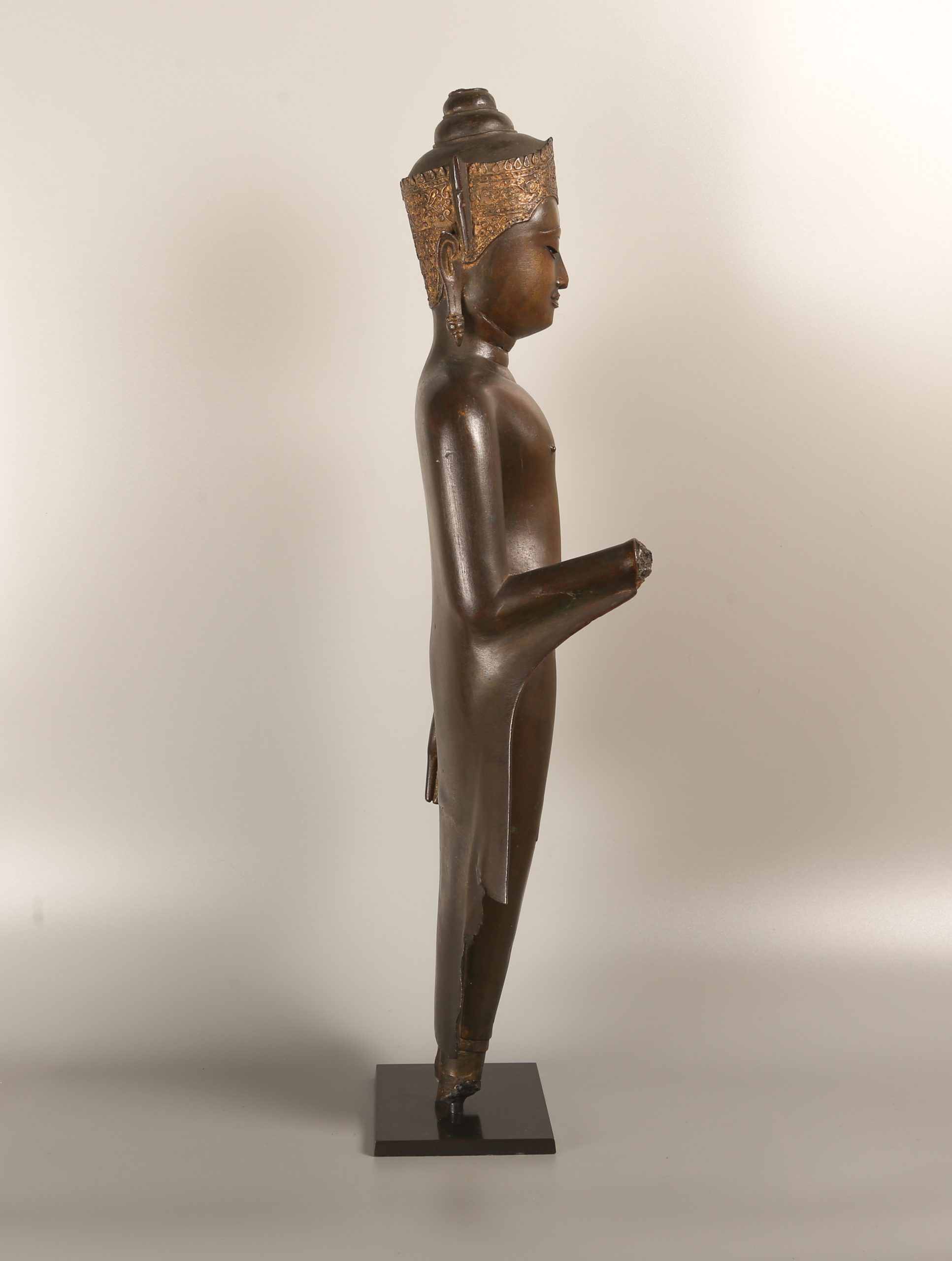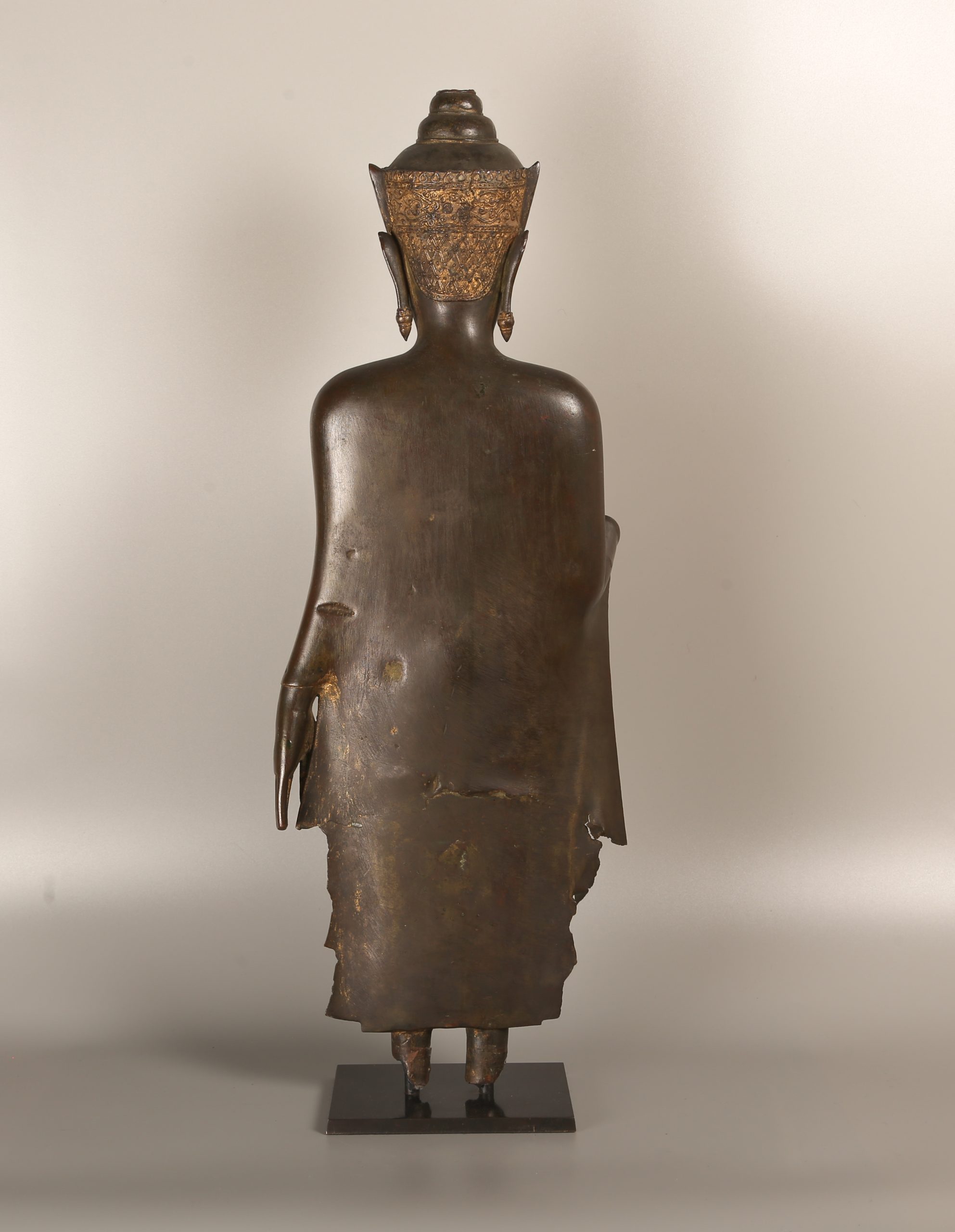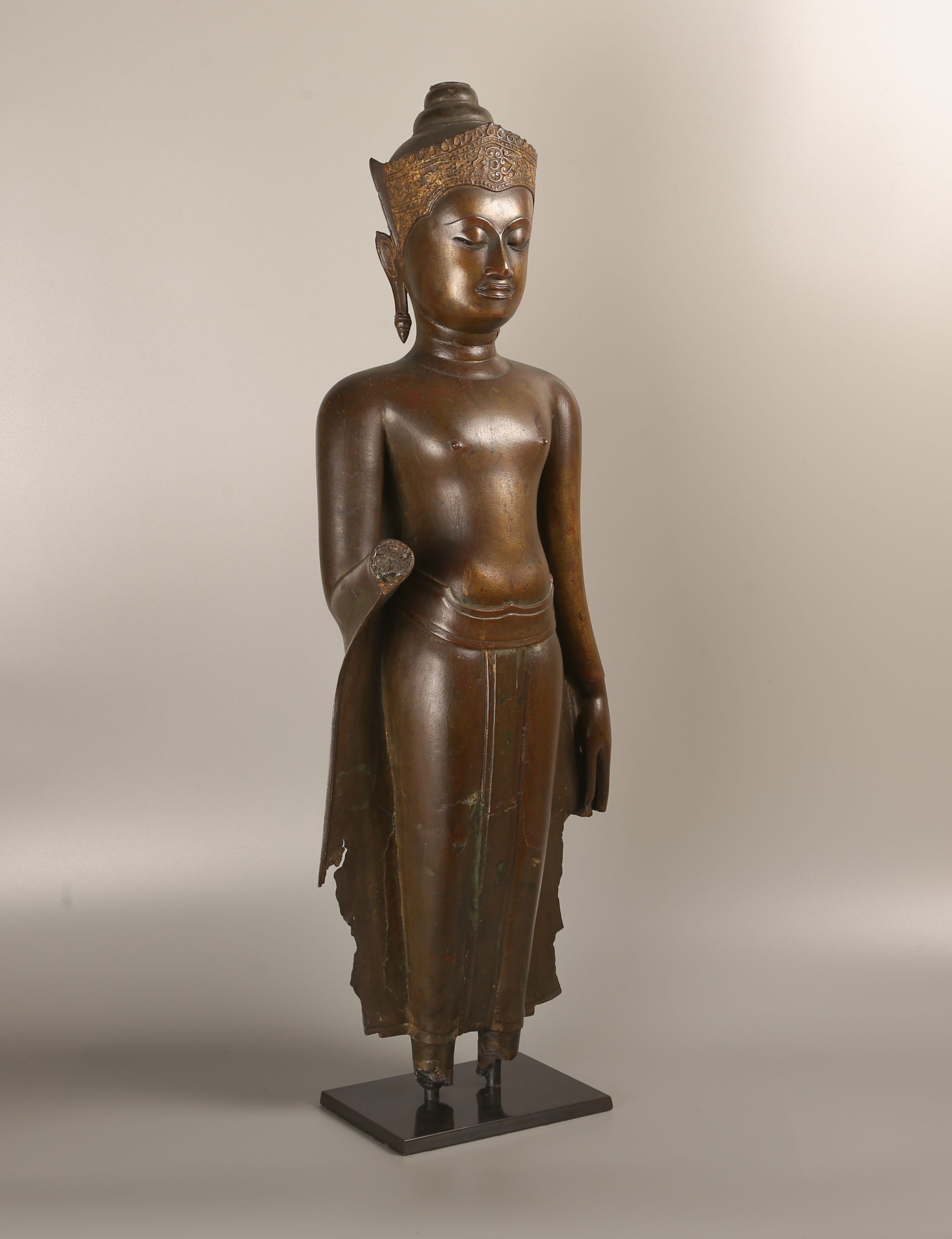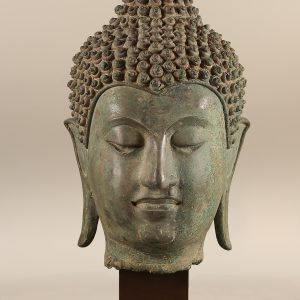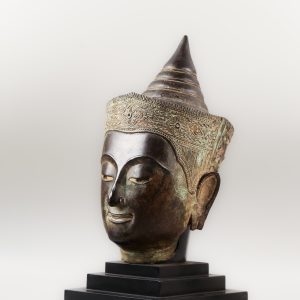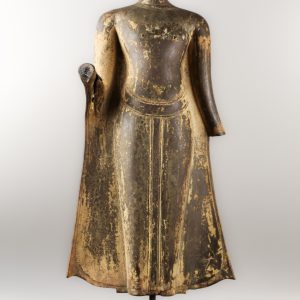Crowned standing Buddha
22 000,00€
Bronze
Thailand
16th-17th century, kingdom of Ayutthayā (1350-1767)
H. 67 cm
Description
During the 16th and 17th centuries, Ayutthaya had one of the most prosperous capitals in the world, with foreign powers clamoring to trade with the ‘Kingdom of Siam’. The tide had turned in the Burmese-Siamese wars, when in 1594 Ayutthaya launched its first offensive invasion of Burma rather than the other way around. The early and mid-17th century also saw one of the longest intermissions between major military campaigns during the three-century war. By 1700, it is estimated that the capital had the world’s largest population, at around one million. During this time, Ayutthayā furthered its vigorous cultural program, culminating in the highest concentration of Buddhist art perhaps anywhere in the world.
The air of Ayutthayā’s prosperity and strength is reflected in this Crowned standing Buddha, which employs delicate ornament and serenity to convey majesty and inner fortitude. This representation of Śākyamuni Buddha is that of the “universal ruler” (cakravartin). Although the dominant Buddhist school in the Kingdom of Ayutthayā is Theravada, the strictest and most sober school meaning “School of the Elders”, this iconography nevertheless imposes itself as in the other schools of Buddhism. It even becomes emblematic of the period of Ayutthayā, during which it was expanding rapidly, both for conceptual and pietist reasons and for its extremely decorative aspect.
The face perpetuates, yet modifies, the Sukhothai style by making it softer. The nose, for instance, is less prominent, the mouth more smiling and the lips fuller. The hair is braided into a high topknot at the top of the head, behind a crown of intricate floral design on either side of a central and factitious cabochon.
A certain tendency to be more decorative is visible in Ayutthayā art from the very beginning. This tendency becomes more accentuated as the centuries pass. One must note the extreme delicacy of the face and the marked relief of the tiara. The overall harmonious simplicity of the silhouette and the abstract physiognomy also emphasize the supreme knowledge and awareness that the crowned Buddha embodies in this form, and thus prevents the viewer from focusing on the mortality of the historical Buddha. His overall simplicity of silhouette and abstracted physiognomy are also designed to emphasize the supreme consciousness that the Crowned Buddha embodies in this form, as opposed to prompting the viewer to focus on the mortality of the historical Buddha. This decorative style was the rage in Bangkok after 1782.
Provenance : English private collection

